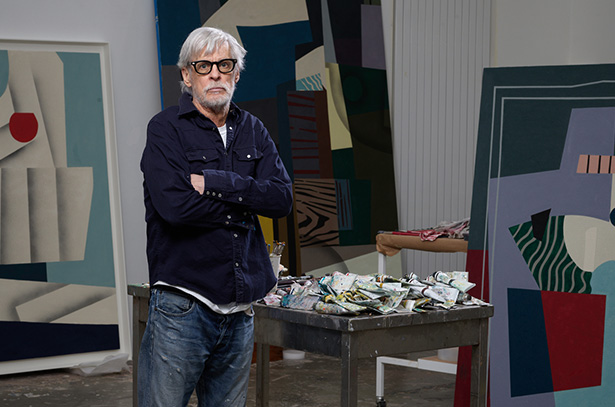
Rodney Graham
The Four Seasons
2 November - 21 December 2013
Zurich
Selected images

Paddler, Mouth of the Seymour
2012 – 2013
Installation views
Related Content
About the Artist

Rodney Graham
With a practice spanning five decades, Canadian artist Rodney Graham (1949 – 2022) operated through systems of quotation, reference and adaptation. From the 1980s, Graham expanded his diverse oeuvre to encompass photography, painting, sculpture, film, video and music. As actor, performer, producer, historian, writer, poet, sound engineer and musician, Graham’s art examined the complexities of Western culture through strategies of disguise, as he shifted seamlessly into different roles and characters. Casting himself as a succession of motley characters, Graham inhabited different personae, genres and art forms for the duration of his career. ‘It may be a burden to reinvent oneself every time,’ Graham said, ‘but it makes things more interesting.’
Often, Graham’s works revolve around a central absurdity, with his characters caught up in inescapable loops as if by a curse. In this sense, the central themes of Graham’s work are the relationship between civilization and nature and the transformation of traditional genres and linear narrative models into banality and irony, with displacement and duplication his favorite artistic strategies. His inspirations included such varied sources as Sigmund Freud, Mallarmé, Richard Wagner, Edgar Allan Poe, Ian Fleming and the Brothers Grimm. He emulated Donald Judd and Nirvana’s Kurt Cobain, or reconstructed Albert Hoffmann’s experiments with LSD. There is a gentle humor and a certain sense of nostalgia about the artist’s melancholy observations of modernity.
Graham’s signature photographic lightbox works are elaborate, allegorical and witty compositions focused on his use of the self-portrait to explore scenarios from our collective cultural memory. Each image is a fictional self-portrait with the artist in costume but always recognizable, portraying a vast array of characters. From the props and their placement within the frame, to the elaborate costumes and stage sets, each scene—either created in his former Vancouver studio or in public facilities around the city—is purposefully constructed and executed with an exceptional degree of technical expertise and humor.
In 1997, Graham represented Canada at the 47th Venice Biennale with his film work ‘Vexation Island’ (1997), which bought him to international recognition. He was subsequently awarded the Kurt Schwitters Prize in 2003, the Gershon Iskowitz Prize in 2004 and the DAAD Scholarship in 2001. In 2011, Graham was given The Audain Prize for Lifetime Achievement in Visual Arts, British Columbia, Canada. He was appointed as an Officer of the Order of Canada in 2016 for his contributions to Canadian contemporary art.
Graham’s work has been the subject of numerous major solo exhibitions internationally, among them a 2004 retrospective that toured the US and Canada, including, among other venues, MoCA Los Angeles, ICA Philadelphia, Vancouver Art Gallery. Other institutional exhibitions include Serlachius Museum Gösta, Mänttä, Finland (2020); Museum Frieder Burda, Baden-Baden, Germany (2017); Museum Voorlinden, Wassenaar, Netherlands (2017); BALTIC Centre for Contemporary Art, Gateshead, UK (2017); Le Constortium, Dijon, France (2016); Sammlung Goetz, Munich, Germany (2015); Charles H. Scott Gallery, Emily Carr University of Art and Design, Vancouver, Canada (2014); Vancouver Art Gallery, Canada (2012); Museum der Moderne, Salzburg, Austria (2011); Museu D’Art Contemporani de Barcelona, Spain (2010); Jeu de Paume, Paris, France (2009); Whitechapel Art Gallery, London, UK (2002); Hamburger Bahnhof, Berlin, Germany (2001); and Kunsthalle Wien, Vienna, Austria (1999).
His work is included in collections worldwide, such as Musée national d’art moderne – Centre Pompidou, Paris; Tate, London; The Museum of Modern Art, New York; Vancouver Art Gallery, Vancouver; National Gallery of Canada, Ottawa; MACBA, Barcelona; Nationalgalerie – Staatliche Museen zu Berlin, Berlin.
Current Exhibitions
1 / 10













